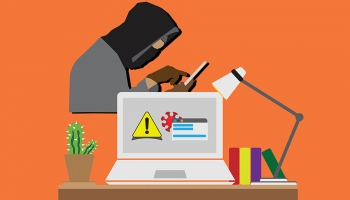COVID-19 and Synthetic Identity Fraud: The Importance of Lenders Mitigating Risks
Fraudsters are taking advantage of this time to target vulnerable populations and companies
- |
- Written by Greg Wright, Chief Product Officer for Experian’s Consumer Information Services

The COVID-19 pandemic has impacted businesses across the country with many companies needing to quickly adapt to a new normal. They have to keep their businesses afloat, while helping employees work remotely and continuing to service clients.
Unfortunately, the country has also seen an increase in fraud. Fraudsters are taking advantage of this time to target vulnerable populations and companies.
From January to mid-July 2020, according to the FTC, consumers have reported losing a total of more than $90 million to COVID-19-related fraud. Even prior to the pandemic, Experian’s 2020 Global Identity and Fraud Report – launched earlier this year – found that while business’s confidence in their ability to stop fraud was high, 57 percent of businesses had experienced rising year-on-year fraud losses, often the result of an inability to authenticate customers. Unfortunately, the increase in fraudulent activity is likely going to continue and potentially even grow when the pandemic eases.
Every day, lenders are faced with multiple types of fraud and scams – and one of the most persistently challenging is synthetic identity fraud. According to McKinsey, synthetic identity fraud accounts for 10-15% of lender losses each year, making it the fastest-growing type of financial crime in the U.S. One key step in any lending process is for lenders to verify the identity of the person applying for a credit card or a loan.
Fraudsters use combinations of real and fake information – sometimes including a minor’s social security number – to create “Frankenstein IDs” and then use these to attain credit. They also often add them to an existing legitimate account as an authorized user. The lender is then left to determine whether a consumer is a real person or not, whether this is a real identity or a synthetic identity. Fraudsters go to great lengths to make it difficult to tell the difference.
Confirming whether a consumer who is applying for credit is real or not is a vital step for lenders to protect their portfolios and manage risk, and the earlier in the process this is done, the better. But how? Many companies are leveraging analytics and artificial intelligence to help with identification. The use of advanced data, machine learning and physical and behavioral biometrics are all crucial to verifying that a person is who they say they are. Similarly, innovative technology and advanced analytics are key to detecting synthetic identity fraud in a lending scenario.
By leveraging a newly launched offering that is integrated into the credit profile, lenders can receive an assurance of an applicant’s validity against synthetic identity as early as when the credit profile is pulled. Providing this assurance at the time of the credit inquiry can help to detect risk, mitigate future losses and protect consumers.
But the solution doesn’t stop there. Historically, there has not been a consistent definition as to what constitutes synthetic identity fraud. Losses associated with this type of fraud are often categorized as “bad debt” or a credit default, which means that true impact of the fraud can be difficult to assess. This can be a challenge in the current environment, as some lenders are already concerned about liquidity and reserves. In order to mitigate some of these concerns, we are providing a standard definition for synthetic identity fraud loss. This definition can help both lenders and regulators classify losses appropriately. Not only will this help manage fraud, but it will also provide lenders the confidence to approve more people seeking credit faster while mitigating risk– which is especially important right now as we navigate the pandemic.
We believe in our solution so much that we’ll share in loan losses on assured profiles with our clients if we get it wrong, which is a first for the industry. For those not assured, a risk indicator is provided to allow for efficient separation of people who may be new to credit verses fraudsters. Taken together, the assurance and the fraud indicator demonstrate a novel approach toward helping our clients and the industry at large put a dent in synthetic identity fraud.
Finally, it is important for lenders to have a risk management system in place to continuously monitor for all types of fraudulent activities across multiple use cases and channels. This includes identity and fraud management platforms that focus on account openings, account takeovers, new account transitions, ecommerce fraud and child identity theft fraud, among others. A robust platform that supports a layered approach can help businesses and lenders stay ahead of the fraudsters and reduce the fraud risk in their portfolios.
In the midst of our current market volatility, now is the right time for lenders to look at their strategies for fraud prevention, particularly synthetic identity fraud. It is vital that companies take action to stay ahead of fraudsters so they can protect their portfolios, avoid escalating future fraudulent opportunities and also reassure consumers of the safety of their finances and identities.
Greg Wright is the Chief Product Officer for Experian’s Consumer Information Services
Tagged under Risk Management, Feature3, Feature, Human Resources, Management, Cyberfraud/ID Theft, Covid19, PPP, Security, Mobile, Online, Cards, Credit Risk, Duties,













